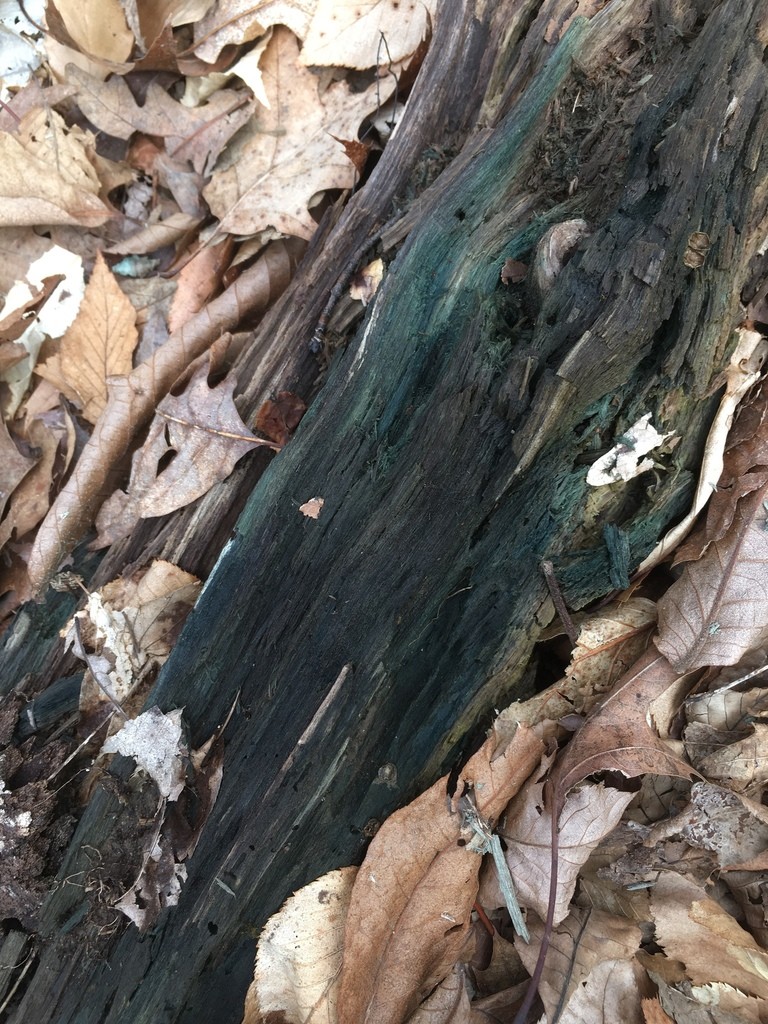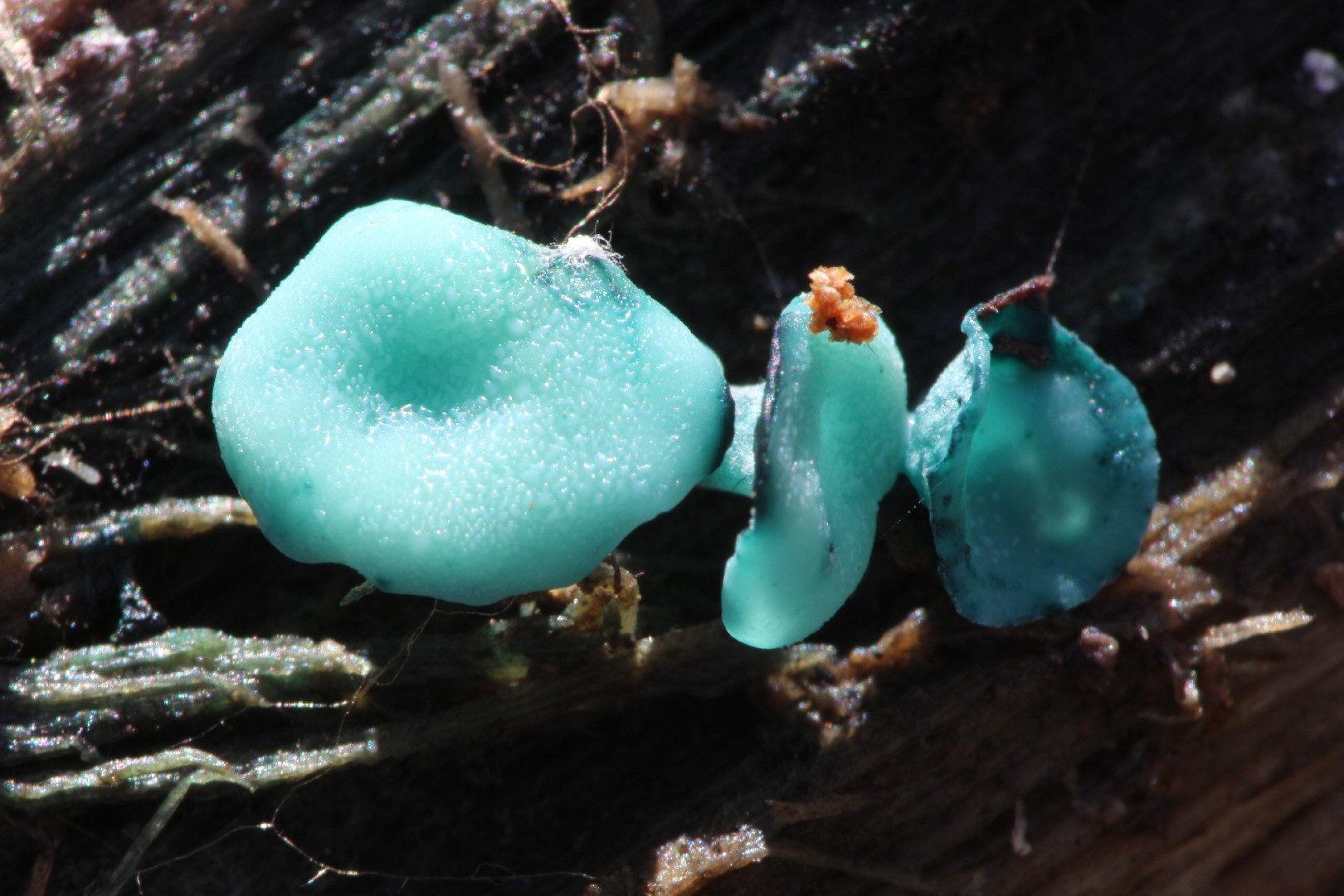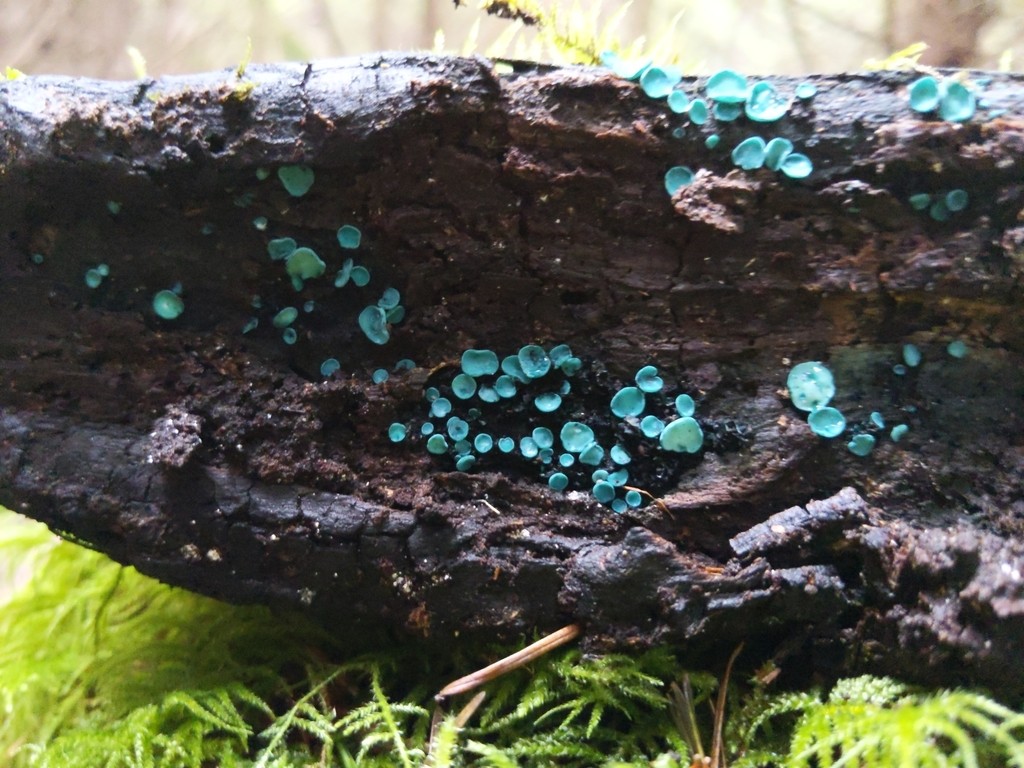Chlorociboria
Scientific name: Chlorociboria
Chlorociboria
Scientific name: Chlorociboria
 Photo By Charlie Hohn , used under CC-BY-4.0 /Cropped and compressed from original
Photo By Charlie Hohn , used under CC-BY-4.0 /Cropped and compressed from original Description
Chlorociboria er kendt for sin iøjnefaldende blå-grønne farve, som stammer fra pigmentet xylindein. Dette levende pigment farver ikke kun det træ, de vokser på, men er også blevet brugt i træbearbejdning til dekorative formål siden det 15. århundrede. Svampen vokser typisk på nedbrudt træ, hvilket gør skove til deres almindelige levesteder. Denne karakteristiske farvning tiltrækker ofte opmærksomhed, hvilket gør chlorociboria letgenkendelig for både entusiaster og begyndere inden for mykologi.
Species of Chlorociboria
Videnskabelig klassifikation
Fylum
Ascomycota Klasse
Leotiomycetes Orden
Helotiales Familie
Chlorociboriaceae Slægt
Chlorociboria 
